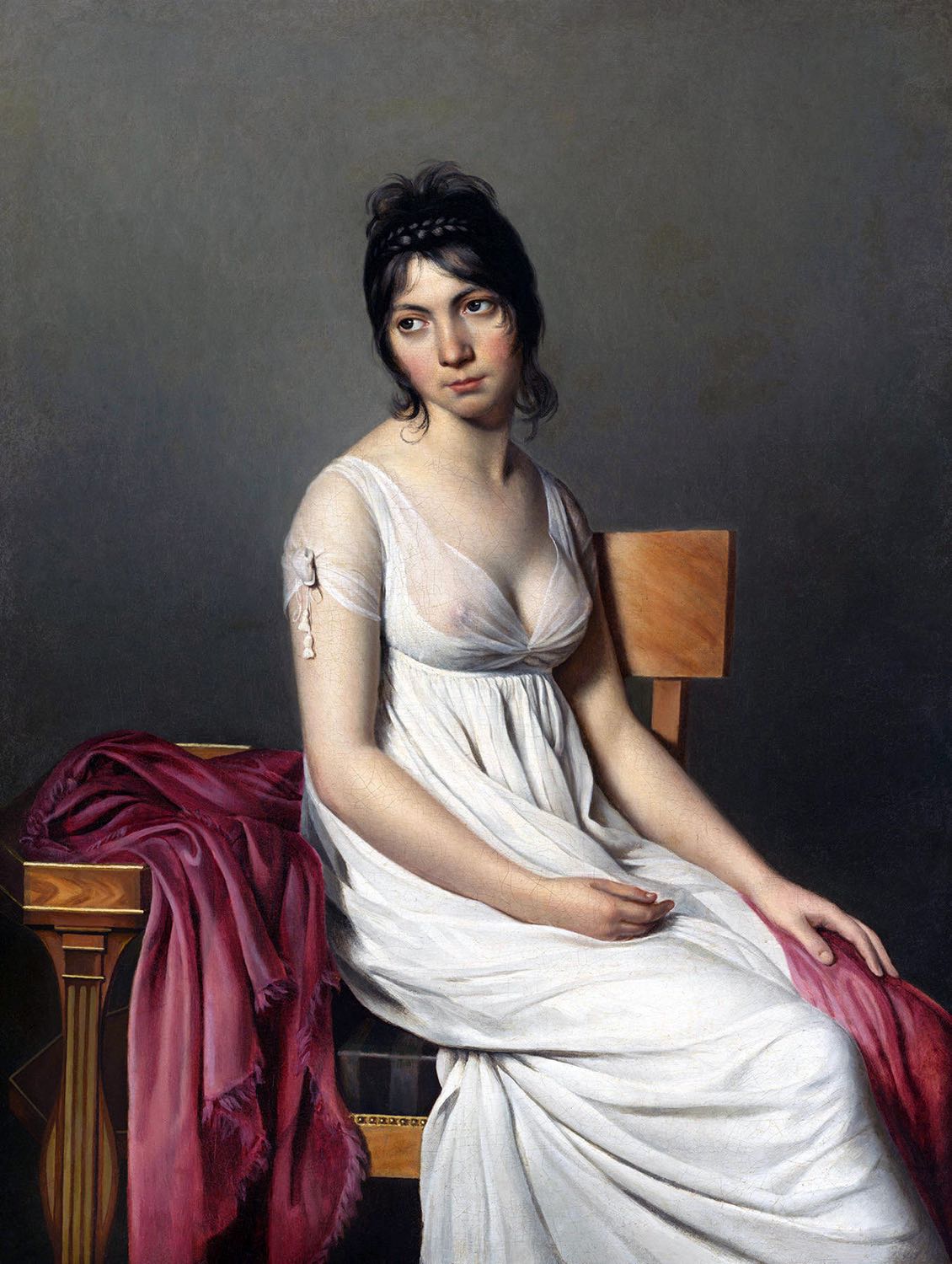
The barrière de l’Étoile, barrière des Champs-Elysées or barrière de Neuilly, was an octroi barrier of the Fermiers généraux’ enclosure opened in 1788 and demolished in 1860.
The barrier takes its name from the place situated at the top of a mound in the centre of a star of paths visible on a plan of 1702, the Roussel plan of 1730 and the Delagrive plan of 1740. It was also called the “barrier of the Champs-Élysées” from the name of the eponymous avenue and the “barrier of Neuilly” because it gave access to the road or avenue of Neuilly, currently the avenue of the Grande Armée (Avenue de la Grande Armée).
BARRIER OF NEUILLY
by Robert Batty, 1822.
OF all the entrances to Paris, that by the Barrier of Neuilly is indisputably the most beautiful. A large avenue of trees borders the great road which leads in a direct line from the bridge of Neuilly to the barrier; near to which, and built on the highest spot of ground, so as to overlook the whole extent of the road, is the triumphal arch de l’Etoile.
This monument, the completion of which has been for a time suspended, was destined to commemorate the victories gained by the French armies. Its present elevation is 60 feet, but it was proposed to raise it to 135 feet; and through its arch, which would have been 47 feet wide, by 87 in height, the road would have opened upon a view of the whole capital. The annexed view was taken from the summit of this monument.
When we view the scene from this elevated situation, we are struck with wonder at the imposing appearance of the numerous fine monuments, palaces, churches, columns, &c. which arise on every side. But the most remarkable feature is the long and beautiful avenue formed by double rows of lofty trees which border the magnificent road leading directly through the Champs-Elysées to the garden of the Tuileries.
At the entrance of this avenue, we ob- serve the barrier ornamented by two quadrangular buildings, surrounded by columns supporting pediments: these edifices serve as guard-houses, and assist in embellishing this approach to the metropolis.

The Barriere de Neuilly
by George Lillie Craik, 1831.
To the west, the Place Louis XV. opens into the magnificent road bordered with trees called the Avenue de Neuilly, which, after passing through the Champs Élysées, is terminated by the barrier of the same name and the spacious circular Place de l’Étoile with its unfinished triumphal arch in the centre. The Barrier de Neuilly (or de l’Étoile, as it is often called) was the scene of the last encounter between the troops and the people on the 29th of July 1830. We have given an engraving of the gate, with the appearance it presented on that occasion, from an original drawing; and shall recount the circumstances of the affair in our second volume.
The Barriere de Neuilly, it will be perceived, consists of two square buildings, surrounded by columns of rather a peculiar construction, each being divided as it were into a succession of shafts by the intervention of salient blocks, which may be considered as forming at once, capitals to what they surmount, and pedestals in relation to what they support.
The effect thus produced is not, upon the whole, unpleasing in a structure such as the present, where the eye looks rather for the variety and florid ornament of a work of fancy than for the grand and imposing in architecture.
This barrier, like the others, was built after the designs of Ledoux, whose patron, the minister Calonne, somewhat strangely chose the period of severe financial embarrassment immediately preceding the Revolution, in which to commence the erection of these gorgeous and expensive structures. “The luxury,” says a late writer, “which the architect has lavished upon these productions, offends every notion of propriety; people beheld with displeasure and murmuring such sumptuous edifices consecrated to the purposes of an exaction oppressive to all classes in the community, and harassing in the extreme to commerce. It was to whiten sepulchres, to hold up to admiration the instruments of tyranny.” *)
*) Dulaure, Histoire de Paris, ix. 397.
Source:
- French scenery: from drawings made in 1819 by Robert Batty (1788 or 1789-1848). London: Published by Rodwell & Martin, New Bond Street, 1822.
- Paris and its historical scenes by George Lillie Craik (1798-1866). London: C. Knight, 1831.
Discover more from World4 Costume Culture History
Subscribe to get the latest posts sent to your email.






